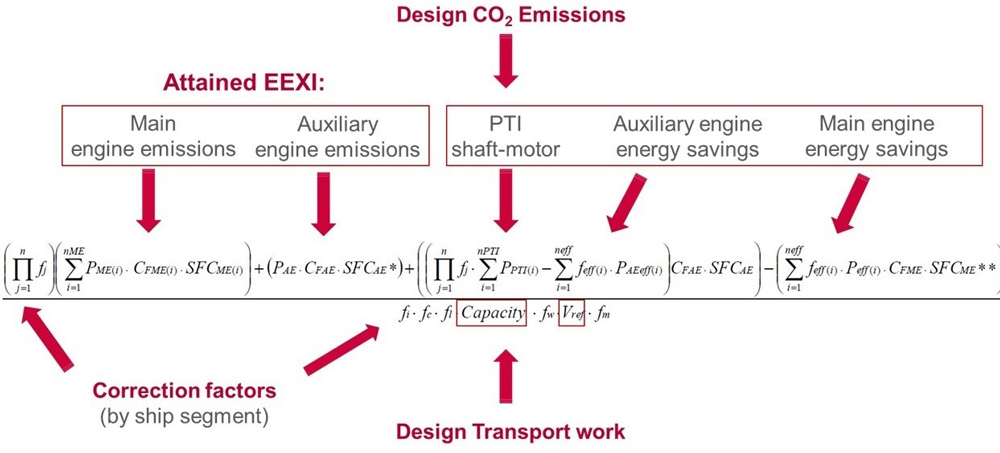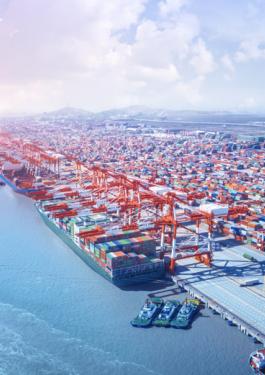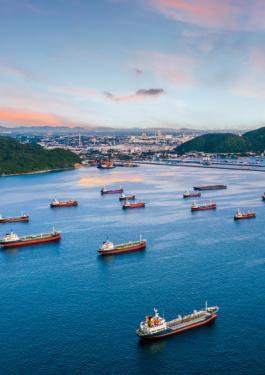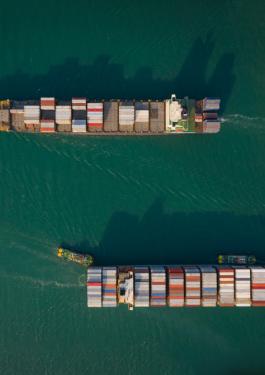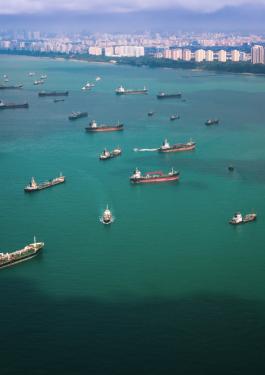Environmental
EEXI and CII: dual regulations reducing ship's carbon impact
May. 3 2021
The International Maritime Organization (IMO) has set ambitious decarbonization targets for the shipping industry, and the key dates for compliance are edging closer. By 2030, the IMO aims to reduce vessels’ carbon emissions per transport work by at least 40% , and is targeting a 70% reduction for 2050. This should be done in parallel with an overall reduction of greenhouse gas (GHG) emissions by 50% across the sector .
To accomplish this, the Marine Environment Protection Committee (MEPC) is increasingly passing regulations devoted to minimizing the marine sector’s carbon emissions and environmental impact. In June 2021, the MEPC will put forward two new regulations that will impact ship owners worldwide: the Energy Efficiency Existing Ship Index and the Carbon Intensity Indicator.
What are the EEXI and CII?
The EEXI is a framework for determining the energy efficiency of in-service vessels over 400 GT that fall under MARPOL Annex VI. The EEXI requires ship operators to assess their ships’ energy consumption and CO2 emissions against specific requirements for energy efficiency for each vessel type. To do this, ship owners may need to implement technical measures to adjust their vessels’ emissions to the required level.
How are EEXI and CII calculated?
EEXI calculations are based on the methodology developed for the Energy Efficiency Design Index (EEDI) for newbuilds. The EEXI describes a vessel’s CO2 emissions, determining standardized CO2 emissions related to installed engine power, transport capacity and ship speed. Emissions are calculated based on the installed power of the main engine, fuel oil consumption, and a conversion factor between fuel and the corresponding CO2 mass.
A ship’s CII is calculated as the ratio of the total mass of CO2 emitted to the total transport work undertaken in a given calendar year. A vessel’s performance rating is determined by comparing a ship’s operational carbon intensity performance with the average performance of others ships of the same type. Required reductions for each ship type are expected to either increase or remain stable over time, ensuring that international shipping achieves the IMO’s intended targets.
Complying with EEXI and CII
Ship owners and managers must prepare for EEXI and CII requirements in advance, taking time to assess and improve their vessels as needed. This is crucial to ensuring that vessels are ready for January 1, 2023, in order to earn the proper certificates to allow them to continue sailing and trading internationally.
To achieve EEXI compliance, vessels can undergo a preliminary assessment, then gain approval for preliminary technical files and earn a statement of compliance. Verification of the ship’s EEXI takes place after January 1, 2023, at the vessel’s first annual, intermediate or renewal survey for its International Energy Efficiency Certificate (IEEC).
For CII, managers must determine ships’ carbon intensity profiles and develop an optimized Ship Energy Efficiency Management Plan (SEEMP) by the end of 2022. This mandatory document is a ship-specific plan that provides a mechanism to help improve the energy efficiency of a ship in a cost-effective manner.
For ships that must moderately or significantly minimize emissions and improve fuel consumption, several options for technical and operational improvements are available. These include switching to low-carbon fuels, limiting engine loads and reducing speed, and retrofitting vessels with energy-efficient technology. One of the goals of the EEXI and CII is to help stakeholders develop a mindset of ongoing improvement, where modifications both small and large can ultimately drive down onboard carbon emissions.
Milestones for compliance with EEXI and CII
Following adoption of EEXI and CII regulations, ship owners will have just over a year and a half to prepare their vessels to comply with the relevant requirements.
- June 2021: MEPC vote on EEXI and CII
- September 2022: completion of EEXI assessment and adoption
- December 2022: development of carbon intensity profile and enhanced SEEMP
- January 1, 2023: EEXI and CII come into force
How Bureau Veritas can support EEXI and CII compliance
Bureau Veritas has a key role to play in accelerating the energy transition by supporting the efforts of ship owners and managers to reduce their environmental impact and comply or even go beyond the requirements of international regulations.
Bureau Veritas Marine & Offshore provides a set of independent regulatory services for clients, including the intermediary and final verification of technical files for EEXI and CII.
Our subsidiary, BV Solutions M&O also offers technical expertise and consulting to help ship owners comply with EEXI and CII. Our experts support ship managers and owners in undertaking a pre-assessment, calculating EEXI and CII and reviewing available technical information. We help clients identify technical and operational improvement methods for their ships, support ship owners in integrating innovative technologies onboard as necessary, and more.
Director for IMO and EU affairs
Bureau Veritas Marine & Offshore
Each new environmental regulation advanced by the IMO reinforces how crucial and urgent the shipping industry’s energy transition has become. Compliance with EEXI and CII is a key step towards marine decarbonization and a major leap towards developing a mindset of ongoing improvement for industry stakeholders. This will be fundamental to meeting IMO targets for long-term decarbonization and creating tomorrow’s greener shipping industry.
